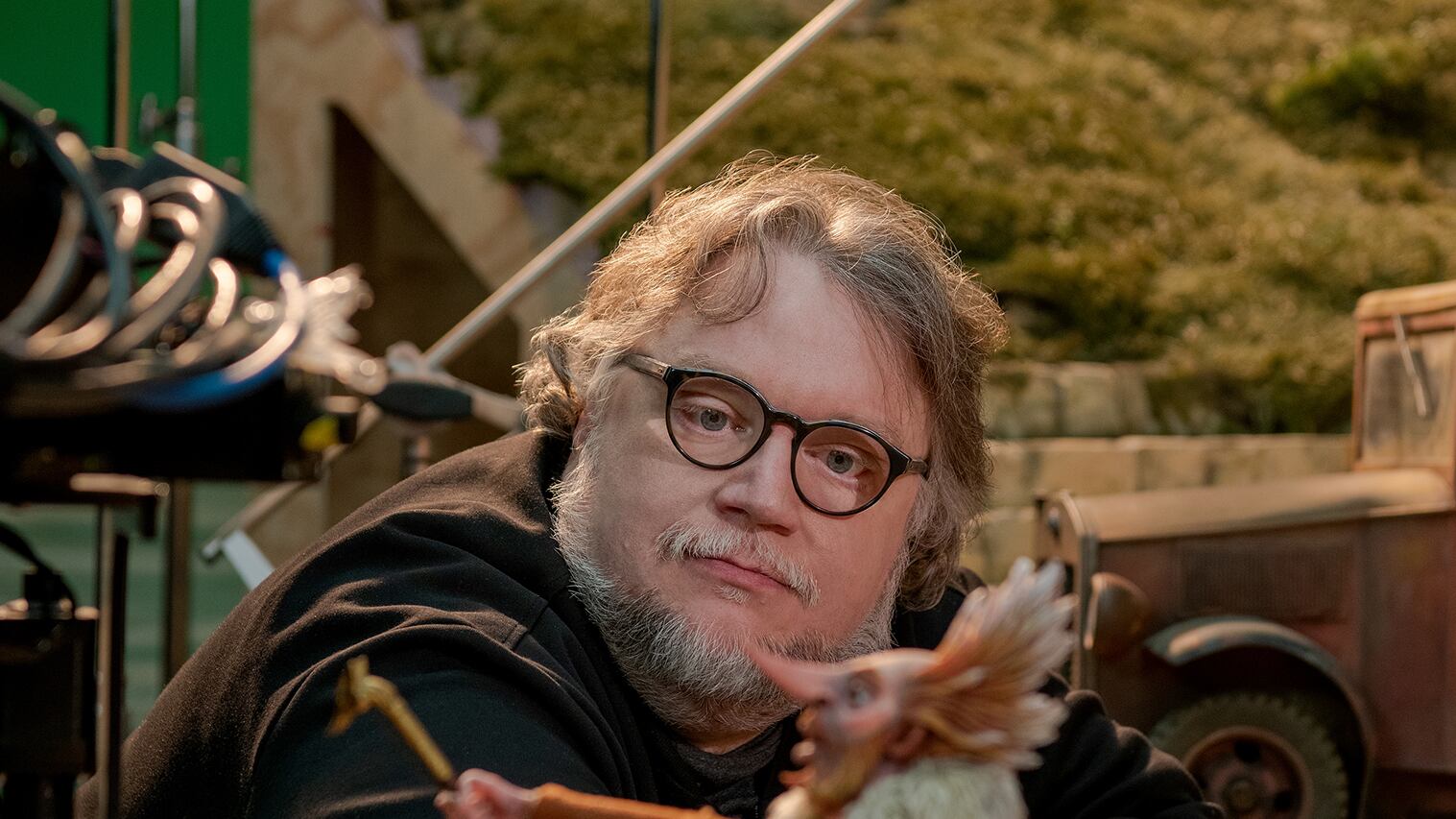The milling about of cinephiles and art lovers slowed to a halt as Amy Dotson, director of PAM CUT and the Portland Art Museum’s curator of film and new media, introduced PAM’s latest exhibit, Guillermo del Toro: Crafting Pinocchio. “This is art,” she said, smiling. “With a capital A.”
It was hard to ignore the artistry plastered across the room as she spoke—the exhibit contains an impressively overwhelming 1,400 objects in total. The foyer alone boasts a myriad of displays with an entire wall’s worth of projected clips from del Toro’s filmography (including Pan’s Labyrinth, The Devil’s Backbone and, of course, Guillermo del Toro’s Pinocchio) and decades-old books with unique takes on Carlo Collodi’s 1883 classic tale.
Even more extraordinary than the exhibit itself is the context in which it came to life. All 1,400 objects were flown out from New York’s Museum of Modern Art just a month ago.
“It’s a really great group of folks that we work with collaboratively,” Dotson tells WW. “Guillermo worked with us, as well as MoMA in New York, and, of course, our friends at Netflix [which released the film] also were working with us throughout because the movie was coming out in real time.”
Dotson (who will appear in conversation with del Toro at a sold-out event June 23) details how working closely with Portland’s ShadowMachine, the animation studio that produced the film, inspired her to showcase the crew members and production.
“I want to just show the mess and the reality that those 400 people had coffee that sat on their desk for three or four days sometimes and the puppets before they came to life and became Academy Award winning,” she says.
Alex Bulkley, co-founder and owner of ShadowMachine, spoke to the intensely collaborative nature of stop motion and highlighted the work of animators, puppet makers, and designers (oh, my!).
“We really believe that you find the best people wherever they are in the world,” he says. “The best puppet makers in the world, by far, are a small company in the U.K. called Mackinnon & Saunders. A handful of our most complicated puppet mechanics were done there. There’s an amazing group of animators, designers and animation tech folks down in Guadalajara, Mexico. It’s Guillermo’s hometown, so he’d just send me down and I’d start working with this incredible pool of talent.”
Across the hundreds of production members behind the epic animation, they collectively spent more than a million hours to bring the imaginative retelling to life. Though the film’s genesis dates all the way back to 2012, the beginning of production happened to coincide with the beginning of the COVID-19 pandemic.
“There’s something called the big board,” Bulkley explains. “The big board takes the script and breaks it down with every single shot across the entire film. Every single shot is then scheduled both in terms of building every single thing you see in that shot, every single voice actor performance into those shots, all the way to the animators on the stages.”
He adds: “That big board becomes the brain trust that everybody references, and we used it consistently all the way through the four years of production. It’s a big part of how we were able to communicate even through COVID. We have this one sort of common ground, one familiar language everyone could speak. It’s an incredible thing and, to be honest, a testament to an incredible crew.”
Bulkley describes how the continuation of a quarantined production following lockdowns helped the crew maintain a sense of normalcy and community during an otherwise world-toppling event.
“Not every production finds such a powerful, collaborative crew,” he says. “It was one of those magical productions where everyone got along, everyone supported each other, and in the face of something really dire like COVID, what a way to come together and talk not just about the hard work we’re all doing, but also ask, ‘Is everyone OK?’ As soon as we were able to, people quickly got back in the studio under the safest conditions. Stop motion is not something that you can do remotely.”
In addition to PAM’s exhibit that runs until September, PAM’s Center for an Untold Tomorrow has also scheduled animation workshops throughout the summer and a screening series of Guillermo del Toro’s Pinocchio and other films by the iconic writer-director. There will also be one “Animation Art Day” per month with lectures and demonstrations from the artists behind the film.
Above all, Crafting Pinocchio is a testament to the collaboration behind del Toro’s creation. As Dotson says, “It’s this interplay between what happens behind the scenes, and how much art and craft and thoughtfulness and teamwork and engineering and dressmaking has to happen before you get to the finished product line.”
SEE IT: Guillermo del Toro: Crafting Pinocchio is on view at the Portland Art Museum, 1219 SW Park Ave., 503-226-2811, portlandartmuseum.org. 10 am-5 pm Wednesday-Sunday, through Sept. 17. $22-$25, children 17 and under free.
